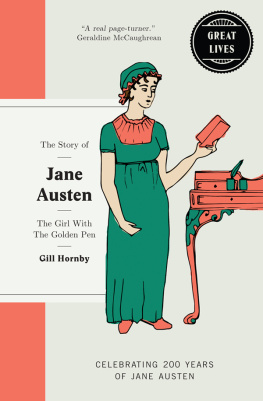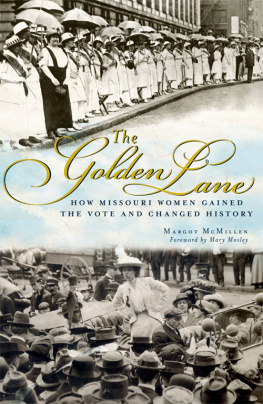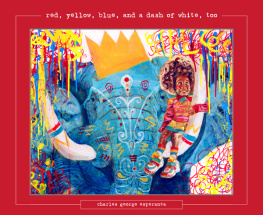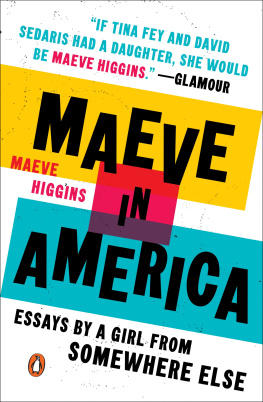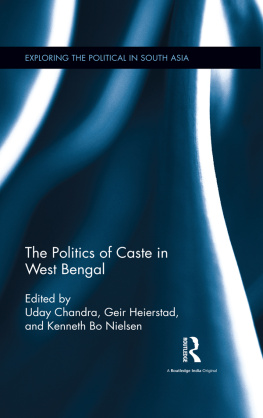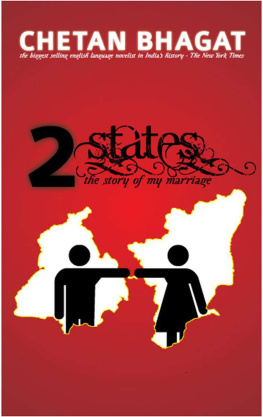Uday Prakash
The Girl with the Golden Parasol
In memory of the secular solitude of the late Nirmal
Verma: the quiet, upright expatriate
and
To my friend and Hindi publisher Arun Maheshwari,
who provided me the ways and means to complete the
book
Rahul, a non-Brahmin college boy, falls in love with Anjali, a Brahmin girl. This shouldnt be a problem in todays modern India of shopping malls, cell phones, and high tech, right? Surely the new forces of progress have begun to level the ancient hierarchies of caste.
The news of these new forces vast changes unleashed by the economic reforms of the 1990s has steadily reached our shores. Liberalization has brought a steep rise in capital influx and mass consumerism to an Indian society that is, in many ways, now utterly transformed. Call centers, cheap cars, job growth from outsourcing, and a flourishing IT sector have shaped a new image of India in the eyes of the West, while tales of Indians on the move and romantic rags-to-riches stories still compete with familiar pieces about the old India: poverty, corruption, riots. Those who can keep up with the aggressive market prosper, while others who dont get with the program may be marked for extinction, according to Uday Prakash in his short story The Walls of Delhi: The poor, the sick, the street corner prophets, the lowly, the unexceptional all gone! Theyve vanished from this new Delhi of wealth and wizardry, never to return, not here, not anywhere.
The visible changes in India are apparent to everyone, and lend themselves to vivid contemporary accounts across fiction, cinema, and journalism. The Girl with the Golden Parasol joins this conversation as a dark statement warning of the fragile human riches in danger of being eradicated by hungry capitalism. In the meantime, those on the move and those left behind are engaged in a struggle for Indias future. Uday Prakash asks which of the two will be ascendant in the next generation: The one with a Pepsi in hand, half-naked model on his arm, Visa card in the pocket; or him, the one with red eyes, whose parents have been plundered for fifty years by successive regimes, who has a weapon in hand and is killed every day in [police and paramilitary] encounters?
Change, as always, comes with stasis, and the visible coexists with the hidden, the concealed. The Girl with the Golden Parasol is an invective against the destructive power of predatory markets, but what gives the book its weight and wings, to borrow a phrase from Susan Sontag, is its foregrounding of caste. Caste is the thing that hasnt changed, but is much more difficult for Western observers of India to make out. Is it like class? Race? Both? Neither?
The deep examination of caste in The Girl with the Golden Parasol is news from a world not to be found in popular accounts of exotic India flush with overripe mangos. Its true that in big cities and particularly among the cosmopolitan beneficiaries of liberalization and globalization, caste can matter a great deal less, or not at all. But the uncomfortable reality is that for a great majority of Indians, despite modernization and widespread access to consumer goods, it still matters quite a bit.
One of the accomplishments of The Girl with the Golden Parasol is the fictional space created by Prakash that allows those getting ahead and those left behind to face off against one another, but with a significant twist: the battle lines of conflict arent drawn between the usual us versus them: rich and poor, landowners and the landless, modern and traditional, developers and slum dwellers. Its all of these groups versus all of these groups simultaneously, but with the dynamics between expected foes infinitely complicated by the fact of caste.
Its difficult to find an analogy that comes close to capturing the feelings of vulnerability among the students depicted in The Girl with the Golden Parasol, but imagine a group of educated, Western, cosmopolitan kids from various socioeconomic backgrounds and of different races trapped in a brutal summer camp run by corrupt zealots. This might be a start. What Prakash dramatizes so well throughout the novel is how caste can intrude into every facet of Indian society, from love and sex to language and literature and does intrude in ways largely absent from todays tales of India.
The writing of The Girl with the Golden Parasol began with some arm-twisting. Hans, the premier Hindi literary magazine established in 1930 by Premchand, the father of modern Hindi and Urdu fiction, was revived in the mid-1980s by the writer and editor Rajendra Yadav. The magazine was publishing a fifteenth-anniversary issue in 1999. Yadav asked Prakash if he would contribute to the issue, but at the time Prakash, though by then already a well-known Hindi fiction writer and poet, was busy doing what paid the bills: filming a documentary. After much insisting, Yadav prevailed upon Prakash, and he began writing what he thought would be a humorous love story. But as he wrote with the deadline looming, everything began oozing out, in Prakashs words: a failed youthful love affair with a Brahmin girl (Prakash is a non-Brahmin) and caste politics that do not allow love or anything humane to happen. He couldnt settle on an ending, so it was decided that the story would continue in serialized form.
Reader response to the story, as it unfolded over four issues in Hans, was dramatic. An extraordinary number of low-caste readers sent postcards, text messages, and even called Prakash to express their enthusiasm. (Its a near-universal practice to publish cell phone numbers of Hindi writers with their bios.) Hans was bought in bulk and distributed among this group of readers, many of whom began referring to The Girl with the Golden Parasol as their Bible.
This reaction made it clear to Prakash, who had not yet finished the serialized novel, that it could not remain a love story. . it was becoming something else. In an interesting interplay between an author and his readers, and perhaps fortified by their reaction, Prakash forged ahead with his full-throated critique of how the forces of globalization in India, instead of providing people with means of empowerment and mobility, have rather served to further strengthen the centuries-old domination of those at the top of the caste ladder what Prakash in the novel calls Brahminism as a shorthand.
At the same time, Prakash realized that he had unintentionally done something blasphemous when he received quite a different kind of response in various Hindi newspapers and magazines. Stern words were used against him in the media. He was called a mad dog and insane not only by critics and academics but also by police officers and high-ranking officials in the Indian civil service. (People from all walks of life in India take part in public conversations about literature.) Unhappy with Prakashs novel, they targeted him personally. More disturbingly, over two dozen of his freelance TV, film, and writing assignments were cancelled almost overnight. Prakash, by foregrounding caste in his book, had clearly touched a nerve.
Here, as in many of his stories, Uday Prakash shows how those who dare to dissent against a suffocating system are punished. But the gloom and pall that hangs over the world in The Girl with the Golden Parasol is hardly the full story. With his biting satire and ambitious narrative detours Prakash also demonstrates how humor and compassion can provide one means to fight back and escape. Rahul, the protagonist of The Girl with the Golden Parasol, reconsiders the field of organic chemistry as his career path:
What would he do with this degree? Hed become a chemist in a brewery or in a food-processing plant owned by some multinational company. Or hed get a teaching position at a college or university. When he thought about his future, Rahul saw the image of a certain type of man take shape: fat, whiny, gobbling pizza slices like a pig, gnawing on morsels of scrumptious fish marinated in yogurt and vinegar, drinking and partying with a teenage girl he was paying by the hour, enticing her with a little dance of his by shaking his pot belly and gyrating his pumpkin-sized saggy ass.

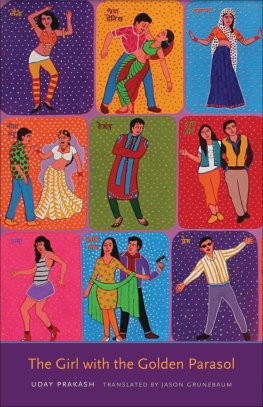

![Dzhon Makdonald - The Girl in the Yellow Suit [story]](/uploads/posts/book/916411/thumbs/dzhon-makdonald-the-girl-in-the-yellow-suit.jpg)

